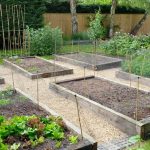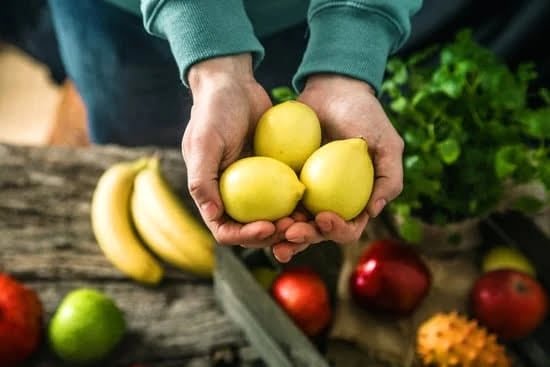Living in an apartment often comes with the trade-off of limited outdoor space. However, that doesn’t mean you have to give up on your dream of growing your own food. In fact, vegetable gardens are perfect for apartment living, allowing you to enjoy the benefits of homegrown produce even in a small space.
With the rising trend of apartment living, more and more people are seeking creative ways to connect with nature and embrace sustainable living. Creating a vegetable garden in your apartment is not only possible but also highly rewarding. Not only do you get to experience the joy and satisfaction of nurturing and harvesting your own crops, but you also have access to fresh, flavorful produce right at your fingertips.
One of the major benefits of growing vegetables in an apartment setting is the ability to control the environment they grow in. You can choose varietals that thrive in small spaces, such as compact or vertical-growing vegetables. Additionally, you can select plants that require less sunlight or can be grown indoors if outdoor space is limited. This adaptability makes vegetable gardening accessible to anyone with a passion for fresh, sustainable food.
In this article, we will explore the ins and outs of creating a successful vegetable garden in an apartment setting. From choosing the right vegetables and finding suitable locations within your apartment to container selection and caring for your plants, we will provide you with all the information and tips you need to start growing your own food.
So whether you have a balcony, patio, windowsill, or rooftop area available, get ready to transform it into a vibrant oasis filled with delicious edible treasures.
Choosing the Right Vegetables for Apartment Living
When it comes to growing vegetables in an apartment setting, it’s important to choose the right ones that are suitable for the limited space available. Here is a list of vegetables that thrive in small spaces and can be easily grown in apartments:
- Leafy Greens: Lettuce, spinach, kale, and Swiss chard are excellent choices for apartment vegetable gardens. They grow quickly and can be harvested continuously by picking individual leaves.
- Herbs: Herbs like basil, parsley, mint, and chives can be grown indoors or outdoors in small pots. They require minimal space and add fresh flavors to your dishes.
- Tomatoes: Compact tomato varieties such as cherry tomatoes or patio tomatoes are ideal for apartment gardening. They can be grown in pots or hanging baskets with support cages or trellises.
- Peppers: Bell peppers and chili peppers can be grown successfully in containers on a sunny balcony or patio. Choose compact varieties that don’t require a lot of horizontal space.
- Radishes: Radishes are quick-growing root vegetables that are perfect for apartment gardens. They don’t take up much space and can be harvested within a month of planting.
When selecting vegetables for apartment living, consider choosing compact varieties or those that can be grown vertically to maximize space utilization. Additionally, some vegetables require less sunlight than others, making them better suited for indoor gardening or areas with limited natural light.
Having the right selection of vegetables ensures a successful harvest even in the limited space of an apartment garden.
| Vegetable | Growing Requirements |
|---|---|
| Lettuce | Partial shade; well-drained soil |
| Basil | Partial shade to full sun; well-drained soil |
| Cherry Tomatoes | Full sun; well-drained soil |
| Bell Peppers | Full sun; well-drained soil |
| Radishes | Partial shade to full sun; moist, well-drained soil |
Choosing the right vegetables for an apartment garden not only ensures their successful growth but also enhances the overall gardening experience. Whether you have a small balcony or a sunny windowsill, there are plenty of options available for apartment dwellers to enjoy the satisfaction of growing their own vegetables. So, don’t let limited space discourage you from starting your own vegetable garden – get creative and start planting.
Finding the Perfect Location for Your Apartment Vegetable Garden
When it comes to apartment living, one of the biggest challenges is finding the right location for your vegetable garden. However, with a little creativity and planning, there are several areas within an apartment that can be utilized for growing vegetables.
One popular option for apartment dwellers is balcony gardening. Many apartments have a balcony or small outdoor space that can be converted into a thriving vegetable garden. To make the most of this area, consider investing in hanging planters or vertical gardening systems to maximize vertical space. Additionally, utilize railing or wall-mounted planters to grow trailing plants like cherry tomatoes or herbs.
If you don’t have access to a balcony, don’t worry. Apartment vegetable gardens can also thrive indoors on windowsills. Windowsill gardening is perfect for herbs and leafy greens that require less sunlight. Choose a south-facing window if possible, as it will provide the most light throughout the day. For north-facing windows, consider choosing vegetables that thrive in partial shade like lettuce or spinach.
Another option is patio gardening if you have access to a communal patio area in your apartment building. Consider using pots or raised beds on the patio to create your vegetable garden oasis. Transforming rooftops into green spaces has become increasingly popular among urban gardeners as well. Check with your building management about any rooftop regulations and safety precautions before starting your rooftop garden adventure.
Maximizing natural light is essential for successful apartment gardening regardless of location. Ensure that your plants receive at least 6-8 hours of sunlight per day by placing them near windows or under grow lights if necessary. Creating suitable microclimates can also help provide optimal growing conditions. Use reflective surfaces like mirrors or white walls to bounce extra light onto plants and choose heat-loving crops for warmer spots in your apartment.
By exploring these different location options within an apartment and optimizing natural light availability, it is possible to find the perfect spot for your apartment vegetable garden. Now that you know where to place your garden, let’s move on to container selection and soil considerations.
Container Selection and Soil Considerations
Choosing the right containers and soil for your apartment vegetable garden is crucial for the success of your plants. In limited space, container gardening provides a convenient and effective solution. Here are some tips to consider when selecting containers and soil for your apartment vegetable garden:
Container Selection
When it comes to choosing containers, there are several options to consider. Pots, hanging baskets, and vertical planters are popular choices for apartment gardens. Each option has its pros and cons:
– Pots: This classic choice is versatile and comes in various sizes, shapes, and materials. They are easy to move around and provide good drainage. However, pots can take up valuable floor space.
– Hanging Baskets: Hanging baskets allow you to maximize vertical space in your apartment garden. They are ideal for growing trailing vegetables or herbs. Make sure that the hanging basket is securely fastened before planting.
– Vertical Planters: Vertical gardening can be a great solution for small spaces as it utilizes wall or balcony space efficiently. Options include wall-mounted planters, stacked pots, or DIY trellises. These types of containers work well with vine-like plants such as tomatoes or cucumbers.
Soil Considerations
Choosing the right soil mixture is essential for the health and productivity of your plants in an apartment setting. Here are some factors to consider:
– Drainage: It’s crucial to have well-draining soil in containers as excess water can cause root rot. Look for potting mixes specifically labeled for container gardening or make your own by combining equal parts of peat moss, perlite, and compost.
– Nutrient Content: Plants in containers rely on you for their nutritional needs since they cannot access nutrients from the ground like traditional gardens. Use organic fertilizers or slow-release granules to provide a steady supply of nutrients throughout the growing season.
– Moisture Retention: The soil should retain enough moisture to keep your plants hydrated but not become waterlogged. Consider adding moisture-retaining additives like vermiculite or coconut coir to the potting mix.
Remember, regular watering is essential for container gardening as plants in small containers can dry out quickly. Mulching the soil surface with organic matter can help retain moisture and prevent weed growth. By choosing the right containers and soil mixture, you’ll create a healthy environment for your apartment vegetable garden to thrive.
Start Seeds or Buy Seedlings
Advantages and Disadvantages of Starting Seeds
Starting seeds is a popular choice for many apartment vegetable gardeners as it offers a greater variety of options and control over the growing process. One advantage of starting seeds is that it allows you to select from a wider range of plant varieties, including unique heirloom options that may not be readily available as seedlings.
Additionally, starting seeds can be more cost-effective in the long run, especially if you plan on growing multiple plants or want to save seeds for future seasons.
However, starting seeds does require some additional effort and resources. It is important to have the proper equipment and space for starting seeds indoors, such as trays or pots, seed-starting mix, grow lights or a sunny windowsill, and regular care in terms of watering and maintaining ideal temperature conditions. Timing is also crucial when starting seeds as different vegetables have specific germination and transplanting requirements.
The Benefits of Purchasing Seedlings
For apartment dwellers with limited time or resources, purchasing seedlings can be a convenient option. Seedlings are young plants that have already sprouted from seeds and are usually sold in small pots at nurseries or garden centers. One advantage of buying seedlings is that they provide a head start, saving you time by skipping the germination stage.
Purchasing seedlings also ensures uniformity in your garden since they are typically grown under controlled conditions. This can be particularly beneficial if you are new to gardening or have limited experience with seed starting. Additionally, buying seedlings reduces the risk of encountering failures during the early stages of growth like poor germination rates or damping-off disease.
Considerations When Choosing Between Seeds and Seedlings
The decision between starting seeds or buying seedlings ultimately depends on your preferences, resources, and level of expertise. If you enjoy getting involved in every stage of the gardening process and have the necessary equipment and space, starting seeds can be a rewarding experience. On the other hand, if you are limited on time or prefer a more straightforward approach, purchasing seedlings may be the best option for you.
It is worth noting that some vegetables are better suited for direct sowing as seeds directly into containers, while others benefit from being started indoors before transplanting. Consider factors such as the vegetable’s growth rate, time to maturity, and specific requirements outlined on seed packets or plant labels. Additionally, keep in mind the climate and growing season of your region as this can influence when it is best to start certain seeds or purchase seedlings.
By carefully evaluating your options and considering your personal circumstances, you can make an informed decision about whether to start seeds or buy seedlings for your apartment vegetable garden. Regardless of which method you choose, both approaches offer enjoyable ways to engage in apartment gardening and yield a satisfying harvest of homegrown produce.
Caring for and Maintaining Your Apartment Vegetable Garden
Maintaining a healthy and thriving vegetable garden in your apartment requires regular care and attention. By implementing proper watering, fertilizing, pest control, and disease prevention techniques, you can ensure the success of your garden. Additionally, it’s important to address the unique challenges that come with gardening in a limited space, such as pruning, trellising, and creating proper airflow.
Watering is a critical aspect of caring for an apartment vegetable garden. It’s important to keep the soil consistently moist but not overly saturated. As apartment gardens are often in containers, they tend to dry out more quickly than traditional gardens. Consider investing in self-watering containers or using a drip irrigation system to ensure your plants receive adequate moisture.
Fertilization is another vital component of maintaining your apartment vegetable garden. Since container gardening often requires frequent watering which can wash away nutrients from the soil, it’s important to regularly feed your plants with organic fertilizers or compost. Choose slow-release fertilizers or liquid fertilizers specifically formulated for vegetables to provide them with the necessary nutrients they need for healthy growth.
Pest control and disease prevention are essential to protect your apartment vegetable garden from common pests like aphids, caterpillars, and whiteflies as well as diseases such as powdery mildew or fungus. Regularly inspect your plants for any signs of infestation or disease and take appropriate action immediately. Consider using natural remedies like neem oil or insecticidal soap rather than harsh chemicals if possible.
Proper pruning and trellising techniques are crucial in a limited space environment. Pruning helps maintain the size and shape of your plants while trellising provides support for vining vegetables like tomatoes or cucumbers. This not only saves space but also improves air circulation around the plants which reduces the risk of diseases.
Harvesting and Utilizing the Produce from Your Apartment Vegetable Garden
Once you have successfully grown your own vegetable garden in your apartment, the next exciting step is to harvest and enjoy the fruits of your labor. Harvesting vegetables at the peak of their ripeness ensures that you get maximum flavor and nutritional value from your produce. Here are some tips to help you make the most out of your apartment vegetable garden harvest.
Timing is crucial when it comes to harvesting vegetables. Different vegetables have different signals that indicate they are ready for picking. For example, tomatoes should be harvested when they are firm and fully colored, while leafy greens can be harvested as soon as they reach a desirable size. Carrots and radishes can be gently pulled from the ground when their tops start to push out of the soil.
Once you have harvested your vegetables, it’s time to put them to use in your apartment kitchen. The great thing about having a vegetable garden is that you can enjoy fresh, organic produce right at your fingertips. You can incorporate these homegrown vegetables into a variety of delicious dishes or even enjoy them raw in salads or as snacks.
If you find yourself with an abundance of produce from your apartment vegetable garden, there are several ways to preserve the excess. Freezing is one popular method for preserving vegetables such as peas, beans, and corn. Blanching them briefly before freezing will help maintain their color and quality.
Canning is another option for preserving fruits and vegetables. This method involves hot-packing the produce into sterilized jars with pickling liquid or syrup before sealing them and processing them in boiling water or a pressure canner. Pickling is yet another creative way to utilize excess produce by preserving it in vinegar, spices, and brine.
Growing your own vegetable garden in an apartment setting provides not only a sense of accomplishment but also access to fresh produce that is full of flavor and nutrients. By incorporating these tips on harvesting and preserving the produce from your apartment vegetable garden, you can fully enjoy the rewards of your hard work throughout the year.
So go ahead and savor the taste of homegrown vegetables, knowing that you have embraced a sustainable and rewarding way of living even in a small space.
Overcoming Challenges and Problem-Solving in Apartment Vegetable Gardens
Maximizing Limited Space
One of the main challenges faced by apartment vegetable gardeners is the limited space available for gardening. However, with some creativity and smart planning, it is possible to maximize the available space and grow a bountiful garden. One effective technique is vertical gardening, which involves utilizing walls, fences, or hanging structures to cultivate plants vertically instead of horizontally. This method saves valuable floor space and allows for increased plant density.
There are several ways to implement vertical gardening in an apartment setting. Hanging baskets can be used to grow trailing plants like cherry tomatoes or strawberries. Vertical planters with multiple tiers can accommodate a variety of herbs and leafy greens. Additionally, installing trellises or stakes alongside containers enables vines such as cucumbers or beans to grow upwards. By making use of vertical space, apartment dwellers can significantly expand their growing area and grow a greater variety of crops.
Supplementing Sunlight
Another common challenge in apartment vegetable gardens is the lack of direct sunlight. Many apartments have limited access to natural light due to surrounding buildings or orientation that obstructs sun exposure. To overcome this issue, consider supplementing sunlight through artificial lighting. LED grow lights are a popular choice as they provide the necessary spectrum of light for plant growth while consuming less energy than traditional bulbs.
When using artificial lighting, it’s crucial to position the lights at the correct distance from the plants and provide an adequate duration of light exposure each day. Seedlings typically require 12-16 hours of artificial light per day, while mature plants may need 8-12 hours depending on their specific requirements. By providing supplemental lighting, even in spaces with minimal natural light, apartment gardeners can ensure their plants receive sufficient light for healthy growth.
Tackling Pest and Disease Issues
Pests and diseases can pose significant challenges in any garden setting, including apartment vegetable gardens. The controlled indoor environment of an apartment can make it easier for pests to thrive and spread quickly. To prevent infestations and tackle pest issues effectively, regular monitoring is essential. Inspect plants regularly for any sign of pests such as aphids, mites, or whiteflies.
If pests are detected, consider using organic pest control methods such as insecticidal soaps or neem oil sprays. These options are safe for both the gardener and the environment. Another proactive measure is practicing good sanitation by cleaning up fallen leaves or plant debris promptly. Removing these potential hiding places for insects can help prevent infestations from occurring in the first place.
In terms of disease prevention, practicing proper watering techniques is crucial to avoid creating a humid environment that promotes fungal growth. Watering at the base of plants rather than overhead helps prevent water droplets from settling on leaves, reducing the risk of diseases like powdery mildew.
Good airflow is also vital to prevent stagnant air that can favor disease development. Regularly pruning plants to remove overcrowded foliage and ensuring adequate spacing between plants will promote proper airflow in the limited space of an apartment garden.
By being proactive in pest and disease management, apartment vegetable gardeners can maintain healthy plants and overcome common challenges associated with indoor gardening environments.
Conclusion
In conclusion, apartment vegetable gardens offer numerous benefits and can be a beautiful addition to any urban dwelling. With the rising trend of apartment living and limited outdoor space, creating a vegetable garden in a small area is an excellent way to connect with nature and enjoy the rewards of homegrown produce.
One of the main advantages of apartment vegetable gardens is the ability to choose the right vegetables that are suitable for growing in limited space. By selecting compact varieties or those that can be grown vertically, apartment dwellers can maximize their harvests while utilizing their available space efficiently. Additionally, choosing vegetables that require less sunlight or can thrive indoors allows individuals to grow a diverse range of crops even if they have limited access to natural light.
Finding the perfect location for an apartment vegetable garden is crucial for success. Balconies, patios, windowsills, and rooftops all offer unique opportunities for gardening in small spaces. By maximizing natural light and creating suitable microclimates, individuals can create thriving vegetable gardens no matter where they live.
Caring for and maintaining an apartment vegetable garden may require some extra attention due to the limited space. However, with proper watering, fertilizing, pest control, and disease prevention techniques, apartment gardeners can ensure their plants stay healthy and productive. Pruning, trellising, and ensuring proper airflow within the limited space are also essential tasks for maintaining a successful garden.
Harvesting the produce from an apartment vegetable garden is a rewarding experience. By picking vegetables at the peak of their ripeness and utilizing them in creative ways in apartment kitchens, individuals can enjoy fresh flavors in their daily meals. Additionally, preserving excess produce through freezing, canning, or pickling ensures that none goes to waste.
While there may be challenges faced by apartment gardeners such as limited space and lack of sunlight, there are creative solutions available. Maximizing space through vertical gardening techniques and supplementing sunlight with artificial lighting are just some ways to overcome these challenges. Troubleshooting common issues like pests, diseases, and nutrient deficiencies is also important for maintaining a thriving vegetable garden in an apartment.
Frequently Asked Questions
What vegetables can I grow in my apartment?
When it comes to growing vegetables in an apartment, there are several options that can thrive in small spaces. Leafy green vegetables like spinach, lettuce, and kale are excellent choices as they have shallow roots and can be easily grown in containers or vertical gardens.
Herbs such as basil, parsley, and mint also make great additions to any indoor garden and can be used for cooking purposes. Additionally, compact varieties of tomatoes, peppers, and radishes can be successfully cultivated in apartments with sufficient sunlight.
Can you have a vegetable garden in an apartment?
Yes, it is definitely possible to have a vegetable garden in an apartment. While the space may be limited compared to traditional gardens, apartments offer creative alternatives such as container gardening, vertical gardening, or even utilizing windowsills and balcony space.
By selecting smaller varieties of vegetables and herbs that don’t require extensive root systems or large plots of land, apartment dwellers can successfully grow their own fresh produce. With proper care and attention to sunlight exposure, watering needs, and appropriate containers or growing mediums, an apartment vegetable garden can flourish.
What is the easiest produce to grow in an apartment?
If you’re looking for the easiest produce to grow in an apartment setting, consider starting with herbs such as chives or mint as they are relatively low-maintenance plants that can thrive indoors. Microgreens are another beginner-friendly option that requires minimal space and care while offering a quick harvest time. Lettuce varieties like loose-leaf lettuce or mesclun mix also tend to be forgiving for novice indoor gardeners.
These greens grow relatively quickly and don’t require deep soil or large pots. Furthermore, radishes are known for their fast growth cycle and adaptability to containers or small spaces – making them ideal for apartment gardening beginners seeking rewarding results.

If you’re looking to get into vegetable gardening, or are just looking for some tips on how to make your current garden better, then you’ve come to the right place! My name is Ethel and I have been gardening for years. In this blog, I’m going to share with you some of my best tips on how to create a successful vegetable garden.





